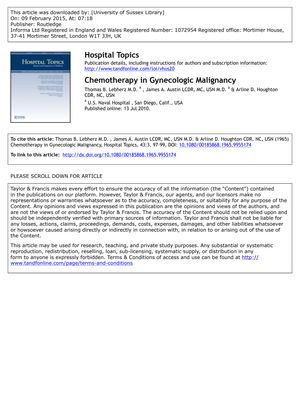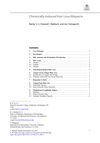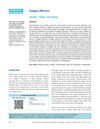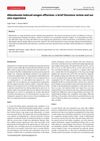Chemotherapy in Gynecologic Malignancy
March 1965
in “
Hospital Topics
”

TLDR Chemotherapy provides symptom relief and extends life in 30-50% of gynecological cancer cases, but has only cured choriocarcinoma.
The 1965 paper discussed the use of chemotherapy in treating gynecological cancers, detailing the roles of nurses in managing drug dosages, side effects, and understanding the drugs' classifications and actions. It categorized chemotherapeutic agents into four types: antimetabolites, antimitotics, alkylating agents, and progestins, providing examples and their applications in gynecologic oncology. Methotrexate was emphasized for treating choriocarcinoma and advanced cervical carcinoma, including its administration and side effects. Alkylating agents like chlorambucil, cyclophosphamide, and Thio-Tepa were noted for their use in ovarian and tubal carcinoma, particularly mentioning cyclophosphamide's potential for causing hair loss. Progestins were highlighted as beneficial for advanced endometrial carcinoma. The paper concluded that while chemotherapy had not cured any gynecologic malignancy except choriocarcinoma, it had provided palliation and life prolongation in 30 to 50 percent of cases, emphasizing the importance of nurses in chemotherapy administration and patient care.





